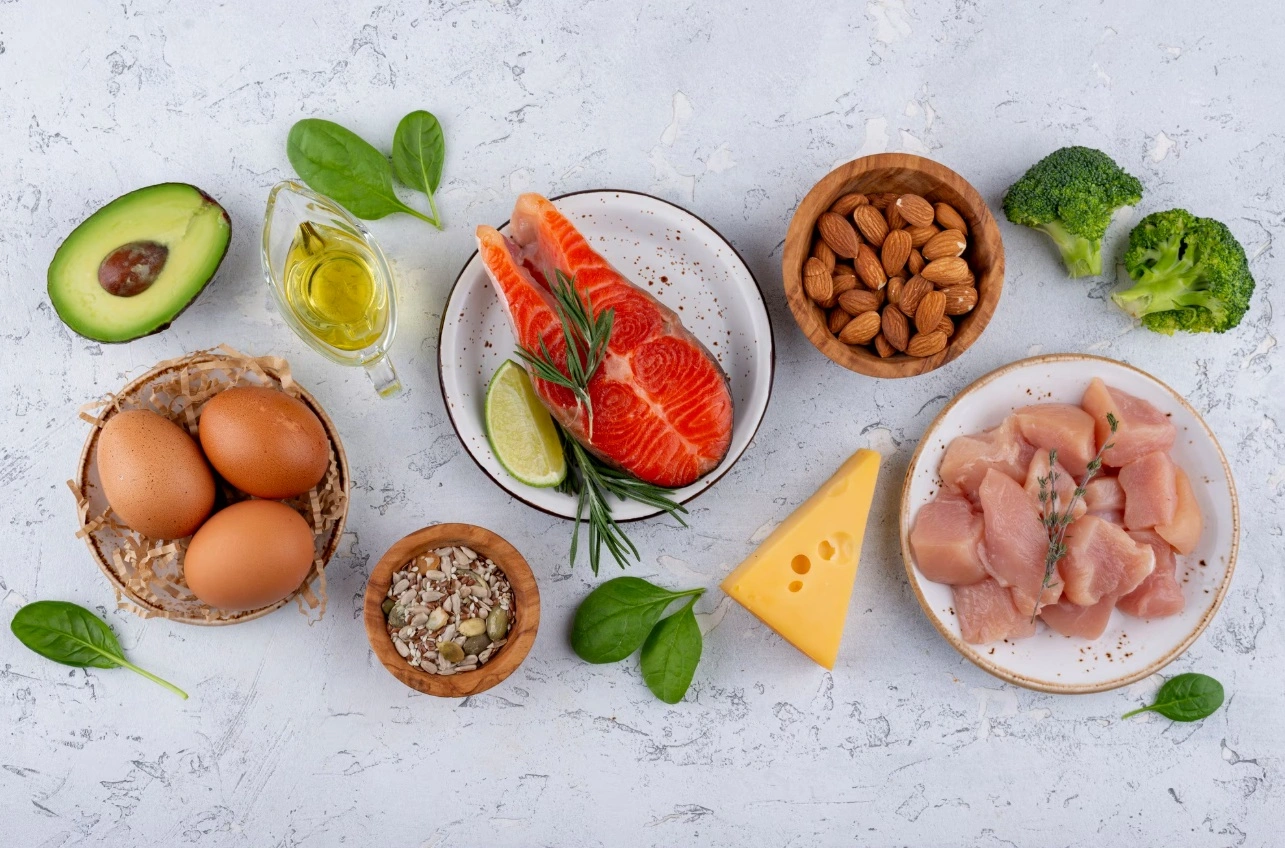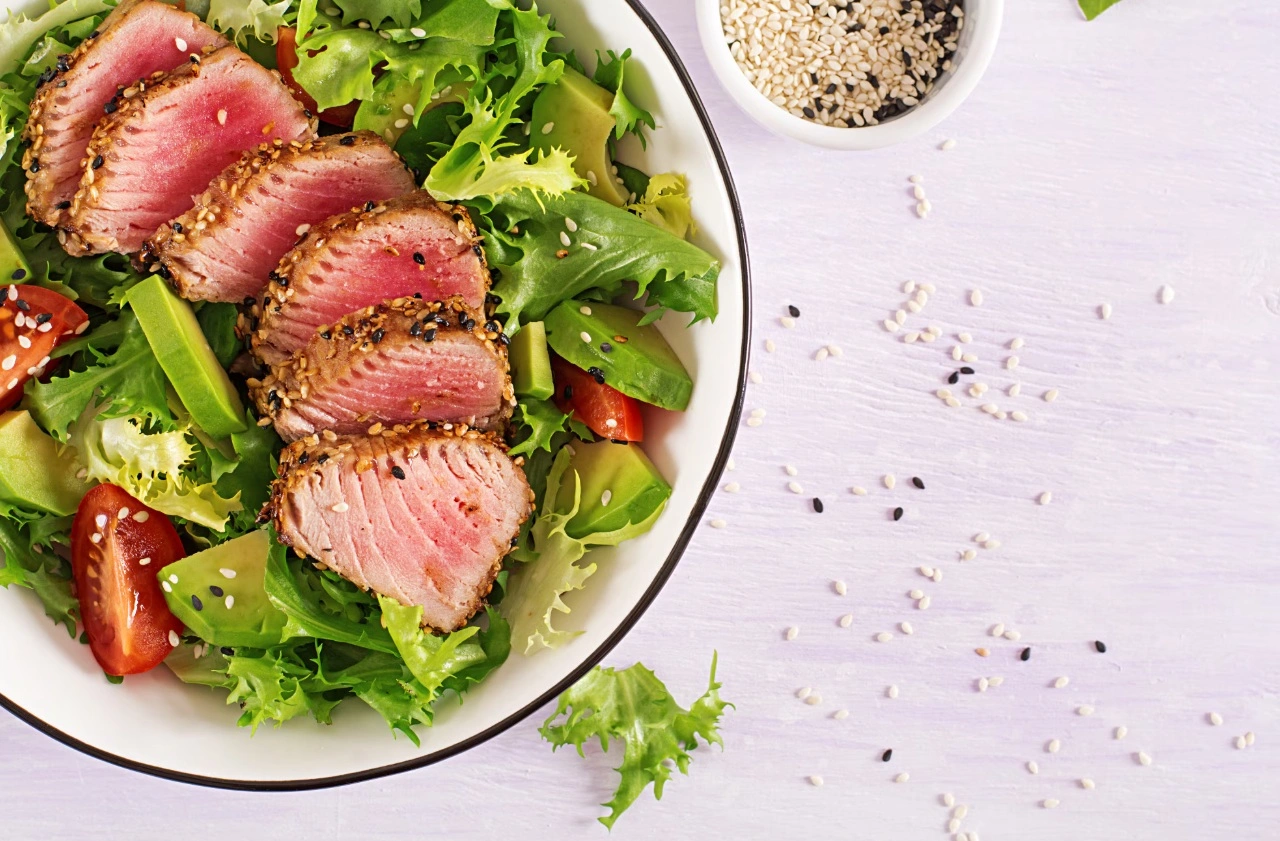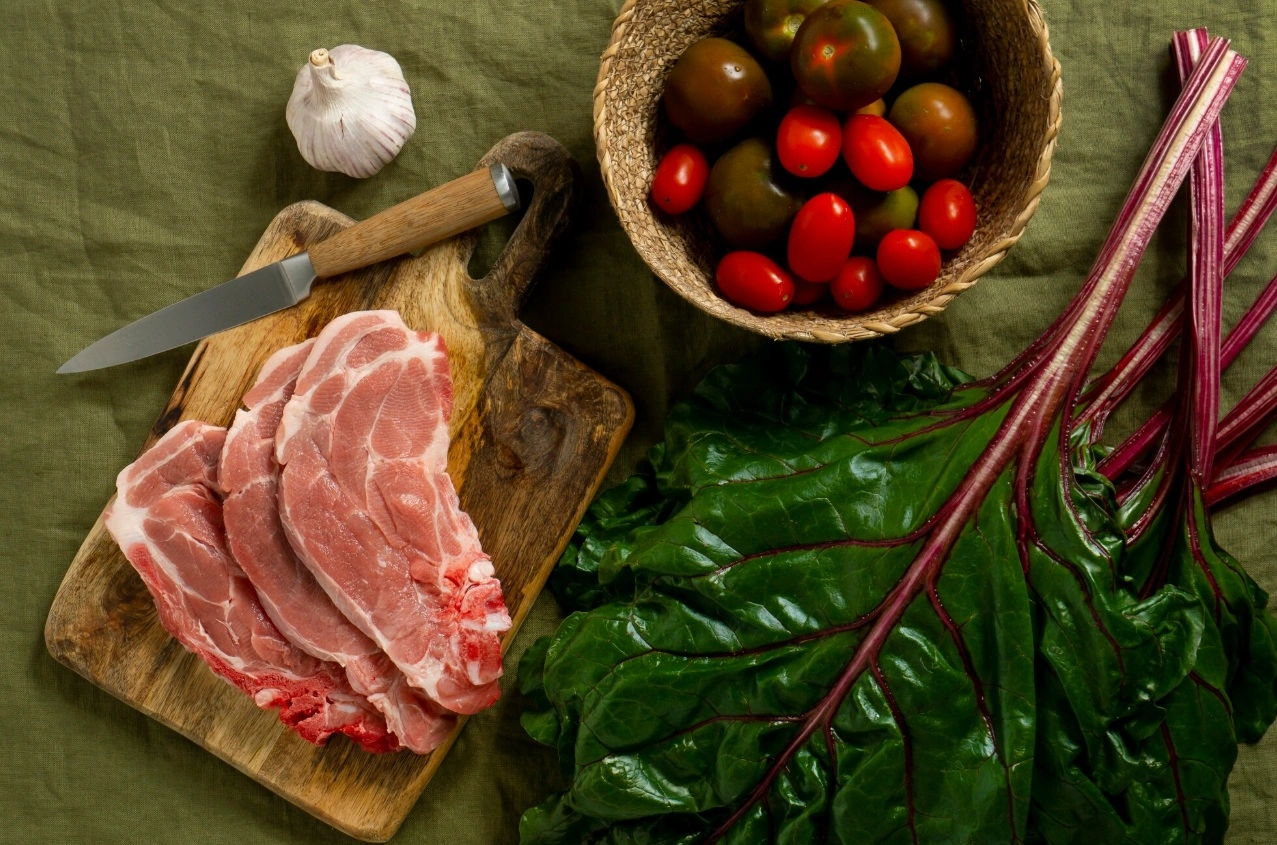
The Ketovore Diet is the stage between the Keto and Carnivore diets, which can help you transition from Keto to Carnivore safely, or work as a separate diet. It keeps carbohydrates low and focuses on animal-based foods, but on a different macronutrient ratio. Ketovore can help you burn fat, balance hormones, and maintain energy without obsessing over macros or removing all plant foods. Let’s find out how Ketovore works, check its pros and cons, and learn its food list and meal plan.
The Ketovore Diet is a low-carb, high-fat, animal-based diet that sources the daily macronutrients from a mix of animal-based and plant-based foods.
If you have tried different levels of the Primal Diet, including a Low-Carb Diet or a Keto Diet, and wish to decrease carbohydrates even further, it is time to go on a Ketovore Diet.
On a Ketovore Diet, a general ratio of daily macronutrients can include less than 10% carbohydrates (25-50 g), 25-35% protein (125-175 g), and 60-75% fat (133-167 g).
This ratio can help your body induce and maintain ketosis while also allowing more food choices. In Ketovore, you still rely on fat for energy instead of glucose.
Burning fat through ketosis encourages the body to burn stored fat efficiently, boosting weight loss, providing steady energy levels, and lowering sugar crashes.
On a Ketovore Diet, you just need to eat real, whole, nutrient-rich foods that naturally fit the Ketovore ratio. It can be a balanced diet that supports metabolism, brain health, and longevity.
Let’s dig deeper and find out how a Ketovore Diet can lead to these health benefits and what we can eat on this low-carb diet.
Learn More: Goal-Based Carnivore Diet Meal Plan PDF + Variations
The Ketovore Diet achieves the same results as a Keto Diet, but more effectively, as it contains fewer carbohydrates. It helps your body rely on the most stable, efficient fuel source: fat.
On this diet, your body gets fat-adapted and burns fat (glycogen) instead of carbohydrates (sugar or glucose).
When you reduce carbohydrates to about 10% of daily macros, your liver produces ketones, which become your body’s main energy source.
This simple change in the body’s energy source reduces blood sugar fluctuations, improves mental focus, and promotes steady energy throughout the day.
You can easily move between Keto and Carnivore diets depending on your metabolic flexibility to reach your goals: fat loss, muscle gain, or healing, without difficult readjustments.
Learn More: Intermittent Fasting 20/4: Results, Side Effects, and How to

The table below summarizes the main differences between Keto, Ketovore, and Carnivore diets to help you decide if it is the right diet for you.
Learning the basics is the first step. To see if the Ketovore Diet is suitable for you, based on your health status, previous diets, and goals, you need to consider the pros and cons of the diet as well.
Learn More: Keto vs Carnivore: The Difference Between Keto and Carnivore
The Ketovore Diet can help you:
On a Ketovore Diet, by reducing carbohydrates to less than 10% daily and sourcing macros from high-fat, high-protein animal foods, your body becomes a fat-burning machine.
Ketovore promotes natural appetite control through high satiety foods, making weight loss sustainable without getting hungry or counting calories [1].
Burning fat and consuming high-protein foods equals stabilized insulin levels and increased fat oxidation, which means getting rid of stubborn belly fat and improving muscle mass within weeks [2] [3].
Ketones are a cleaner and more efficient energy source for the brain than glucose. Going on a Ketovore Diet and burning fat for energy can increase your mental focus, decrease mood swings, and promote consistent productivity throughout the day [4] [5] [6].
Learn More: Speed Keto Diet: What Is It and How Does It Work?
Removing sugar, grains, and inflammatory oils can significantly improve gut health and reduce bloating. Many individuals report relief from autoimmune symptoms, skin breakouts, and joint pain [7] [8].
Animal-based diets are also easier on digestion since they lack plant antinutrients and fiber that can irritate sensitive guts [9] [10].
By consuming high-quality whole proteins and natural fats, the Ketovore Diet stabilizes insulin, cortisol, and sex hormones. This balance helps both men and women regulate hunger, mood, and reproductive health [11] [12].
As with any diet, Ketovore may come with some side effects, which are generally temporary and usually fade away as you cross the transition stage.
Learn More: The Best Bacon Dip Recipes for Carnivore and Keto

Although the Ketovore Diet is generally safe for those who have experience with low-carb diets, it is wise to consider the following side effects or drawbacks and be prepared.
These effects are usually temporary and can be managed easily with enough hydration, mineral balance, and gradual adaptation. You can find more solutions and information in the table below [13] [14].
Learn More: Carnivore Diet Side Effects and How to Avoid Them
Please note that if you are dealing with diabetes, thyroid issues, or kidney concerns, you should consult a healthcare provider before starting Ketovore.
Learn More: What Causes Carnivore Flu? Top 5 Ways to Recover Quickly
Starting the Ketovore Diet is simpler than you think. Here is what you need to do.
Once your body adapts, you will notice improved mood, fewer cravings, and a steady energy flow, without relying on caffeine or carbohydrates. A complete Ketovore food list and meal plan are two important tools to start a healthy Ketovore Diet.
Learn More: High Protein Lasagna Recipe with Cottage Cheese for Keto
You can provide your daily calories from the Ketovore Diet foods listed below. Buying whole, high-quality, and fresh foods is the key to achieving better results on this low-carb diet.
Learn More: Keto, Ketovore, and Carnivore Diet Recipes
Learn More: 30-Day Carnivore Diet Meal Plan PDF Free Download
The following table shows a sample 7-day Ketovore Diet meal plan.
Consuming bone broth or electrolyte drinks daily can help you maintain hydration and prevent Keto flu.
Learn More: 30-Day Carnivore Diet Meal Plan PDF (Downloadable File)

The Ketovore Diet is especially suitable for those who:
Athletes, biohackers, and those looking to improve their health can go on a Ketovore Diet to boost performance and recovery.
Ketovore is also popular among those with autoimmune or metabolic conditions seeking a balanced, anti-inflammatory lifestyle.
Learn More: 5 Best Keto Fat Bombs with Recipes: Why and When to Use Them
Consistency is key to success on any diet. The simpler you keep your meals, the easier it becomes to sustain Ketovore as a long-term lifestyle.
Learn More: Carnivore Cheesecake Recipe: Yummy Zero- & Low-Carb Desserts
The Ketovore Diet acts as a bridge between Keto and Carnivore, offering both the structure of Keto and the simplicity of Carnivore. It is a good way for those who are trying to shift from Keto to zero-carb Carnivore.
It can also be a separate diet that promotes fat loss, energy stability, mental clarity, and inflammation control. It can be a long-term diet for those looking for simplicity and whole foods.
Please consult your healthcare provider before starting any new diet, including Ketovore, to ensure it aligns with your current health status, metabolic needs, and goals.
Learn More: Carnivore Diet Before and After Photos: Carnivore Diet Results
Let’s answer the most frequently asked questions about the Ketovore Diet.
The Ketovore Diet is a low-carb diet mixing Keto and Carnivore principles, mainly animal-based foods with very minimal carbohydrates.
Keto includes more plant-based fats and vegetables, while Ketovore focuses on animal products.
Meat, fish, eggs, butter, cheese, and low-carb foods like avocado or leafy greens.
Yes, it naturally curbs hunger and promotes fat burning through ketosis and improved insulin sensitivity.
Yes, temporary fatigue, headaches, or digestive changes can occur early on, but usually disappear after 1-2 weeks.
Yes, but keep it moderate and choose full-fat, low-lactose products.
Learn More: Is Cream Cheese Keto? 5 Best Cream Cheese Brands + Recipes
When balanced with nutrient-dense animal foods and proper hydration, it can be safe and sustainable.
Yes, black or with heavy cream. Avoid sugar and plant-based creamers.
They differ in macronutrient ratio. Carnivore excludes all plants, while Ketovore allows small, low-carb foods.
Focus on red meat, eggs, butter, and tallow. Add avocado or greens occasionally.